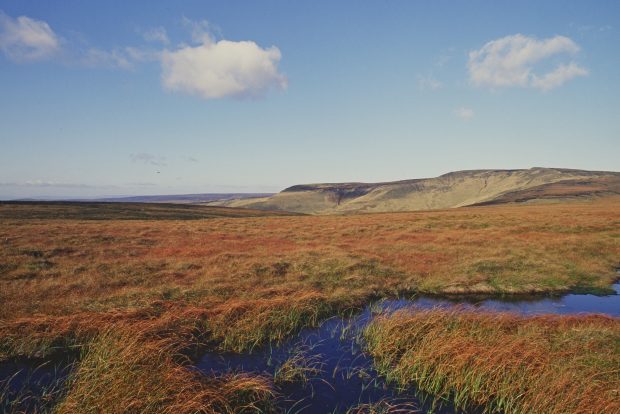
There has been recent media coverage in The Times, The Daily Telegraph, The Daily Mail, Independent, BusinessGreen, Eastern Daily Press, Farming Today, Western Morning News, Yorkshire Post and Cornwall Live around the government’s announcement to bring forward legislation to prevent the burning of heather and other vegetation on protected blanket bog habitats.
To protect our precious peat bogs, new regulations will prevent the burning of any specified vegetation on areas of deep peat (over 40cm depth) on a Site of Special Scientific Interest that is also a Special Area of Conservation or a Special Protection Area unless a licence has been granted or the land is steep or rocky.
‘Rotational’ burning is used as a management tool on moorland and blanket bog. It is commonly used for the managing of red grouse. It is used to stop heather growing too tall and woody, and, after the burn, heather regenerates, which is considered to be more nutritious for grouse to consume.
There is a consensus that burning of vegetation on blanket bog is damaging to peatland formation and habitat condition. Blanket bog, a type of peatland, is a delicate habitat of international importance, with the UK having 13% of the world’s blanket bog.
Environment Secretary George Eustice said:
Our peatlands have great potential as a natural store of carbon, as well as protecting habitats, providing a haven for rare wildlife and being a natural provider of water regulation.
We want to work with land owners to restore the natural hydrology of many of these sites through our new agricultural policy to support our ambitions for the environment. The burning of heather on these sites makes it more difficult to restore their natural hydrology which is why we are taking this step today.
The regulations will come into force following approval from Parliament. We expect this to be in sufficient time for the regulations to be implemented ahead of the next burning season (starting on 1 October 2021).
The government recognises that burning remains a legitimate land management technique when conducted in the right place, at the right time and for the right reason. The legislation does allow for burning, under strict licence, to manage wildfire risk where there is no practicable alternative, we would expect such burning to form part of a cohesive management plan that aims to return the land to a natural wet state; and when it is so restored, burning will become unnecessary.
The Government will be setting out further measures to protect England’s peatlands this year as part of a package of measures to promote restoration and deliver more nature-based solutions to climate change. The government’s £640m Nature for Climate Fund also includes funding to kick-start a programme of peatland restoration over the next 5 years.